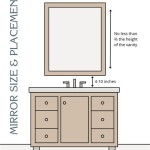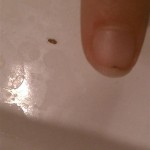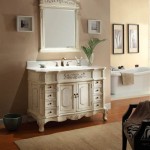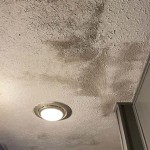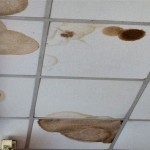Can You Use PVC for Bathroom Exhaust Fan Ductwork?
Bathroom exhaust fans are essential for removing moisture and odors from the air, preventing mold growth and maintaining a healthy environment. While metal ductwork is the traditional choice for exhaust fan installations, the question of whether PVC can be used for bathroom exhaust fan ductwork arises frequently. PVC, with its affordability and ease of installation, offers an appealing alternative, but its suitability for this application requires careful consideration.
The Challenge of Moisture and Heat
One of the primary concerns with using PVC for bathroom exhaust fan ductwork is its susceptibility to moisture and heat. PVC is a thermoplastic material that softens and deforms under prolonged exposure to high temperatures. Bathrooms, with their inherent humidity and potential for hot water vapor, create a challenging environment for PVC. The heat generated by the exhaust fan motor can further exacerbate this issue. Prolonged exposure to moisture and heat can lead to the degradation of PVC, compromising its structural integrity and potentially causing leaks or even collapse.
While PVC manufacturers often claim their products are suitable for use in certain bathroom applications, it is crucial to understand these claims are often based on specific conditions and limitations. For instance, some manufacturers may specify that PVC can be used for vent stacks but not for horizontal runs, which are more prone to moisture accumulation. Additionally, the type of PVC used is crucial. Standard Schedule 40 PVC, commonly used for water supply lines, is not designed to withstand the high temperatures and moisture found in bathroom exhaust systems. Specialized PVC products, such as Schedule 80 or CPVC (chlorinated polyvinyl chloride), may offer improved resistance to heat and moisture, but even these options come with limitations and potential for degradation over time.
Code Compliance and Safety Concerns
In addition to material properties, code compliance and safety concerns must be considered when evaluating the use of PVC for bathroom exhaust fan ductwork. Building codes vary by jurisdiction, but many prohibit the use of PVC for exhaust fan ductwork due to fire and safety considerations. PVC is a flammable material, and while some types have been treated with fire retardants, their performance under extreme heat can be unpredictable. Many codes require the use of non-combustible materials like metal for exhaust ductwork, particularly in areas with high fire risk like bathrooms.
Beyond fire safety, there are other safety concerns associated with using PVC for exhaust fan ductwork. PVC can emit harmful chemicals when exposed to heat, and its fragility makes it susceptible to cracking or breaking, potentially creating a safety hazard. Furthermore, PVC can be difficult to seal effectively, leading to air leaks and reduced airflow. These leaks can compromise ventilation efficiency and allow moisture to escape into the walls, creating a breeding ground for mold and mildew.
Alternatives to PVC
When considering alternatives to PVC for bathroom exhaust fan ductwork, metal is often the preferred choice. Metal ductwork, typically made of galvanized steel or aluminum, offers superior resistance to heat, moisture, and fire. It also provides better structural integrity, ensuring effective ventilation and reducing the risk of leaks or collapse. Metal ductwork is typically easier to seal and provides greater durability over time.
While the initial cost of metal ductwork may be higher than PVC, its longevity and lower maintenance needs can offset the difference over the long term. Additionally, the safety and environmental benefits of using a non-combustible and less volatile material contribute to its overall value.
Factors To Consider
While PVC may appear as a cost-effective option for bathroom exhaust fan ductwork, its suitability requires careful consideration of various factors. The following factors should be carefully evaluated before making a decision:
- Local building code requirements: Check local codes for regulations regarding exhaust fan ductwork material and installation.
- Type of PVC: Choose specialized PVC products designed for high temperatures and moisture resistance if PVC is deemed acceptable.
- Length and complexity of the ductwork: PVC may be suitable for short, simple runs, but longer or more complex installations might be better suited for metal ductwork.
- Ventilation system layout: Consider the location of the exhaust fan and ventilation system to assess the potential for moisture accumulation and heat buildup.
Ultimately, the decision of using PVC for bathroom exhaust fan ductwork should be made based on a comprehensive assessment of the project's unique circumstances, considering both material properties and code compliance requirements. Prioritizing safety, longevity, and adherence to local regulations is crucial for ensuring a reliable and efficient ventilation system.

Bath Fan Duct Metal Or Plastic Homesmsp Real Estate Minneapolis

How To Install A Bathroom Fan Vent The Post

The Basics Of Bath Fans Fine Homebuilding

Pvc Ventilation Duct Inspecting Hvac Systems Internachi Forum

Bathroom Extractor Fan Install Using Rigid Plastic Duct

What Extractor Fan Do I Need For My Bathroom Blog World

What Type Of Duct To Use For A Bathroom Ventilation Fan

Inspecting The Bathroom Exhaust Fan Internachi

Pvc Exhaust Fan At Rs 550 Piece Ventilation Fans In Delhi Id 20086928048

Invisible Ventilation For A Better Bath Fine Homebuilding
Related Posts
